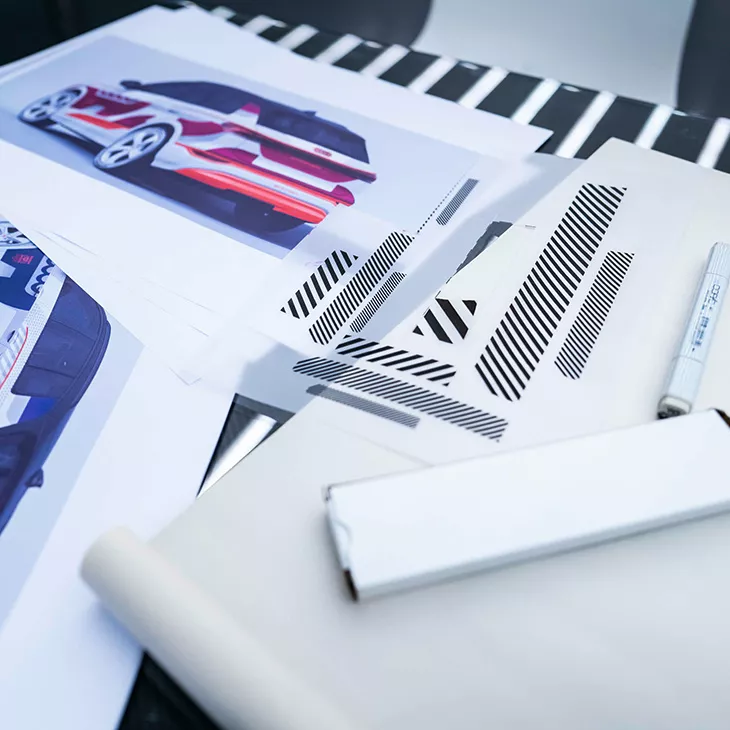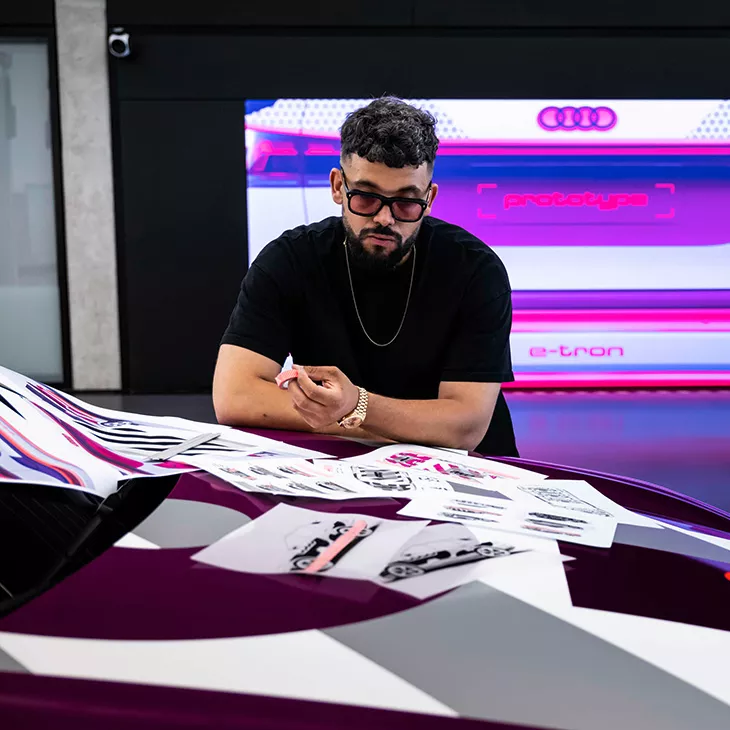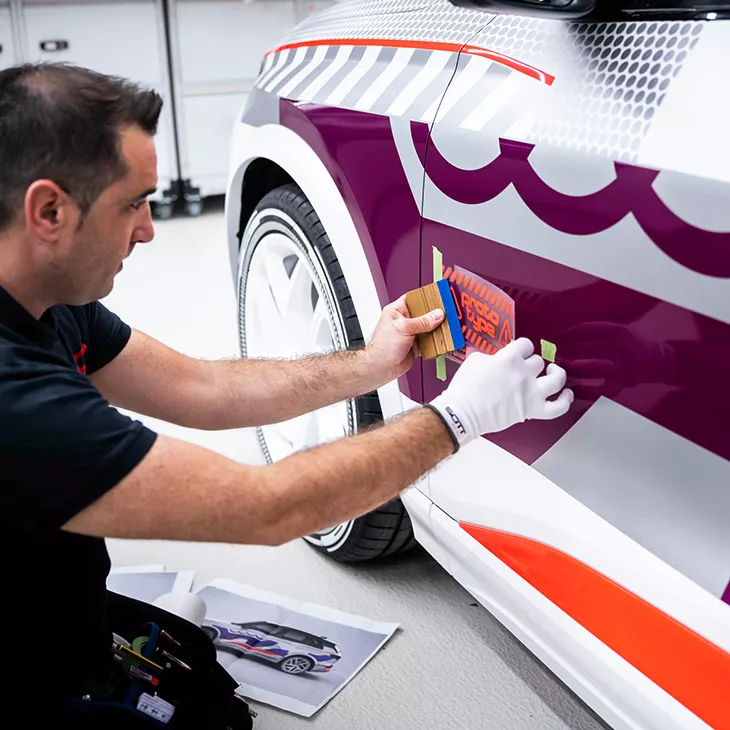“Like a tailor-made suit”: What makes the decals for the Audi Q6 e-tron prototype unique
• Individual accents for vehicle sculpture: design and craftsmanship for the first fully electric Audi from Ingolstadt
• The goal is to abstractly reflect and visually reinforce the character of the model through decals
• Designer Marco dos Santos: “The decals serve as a means to transform technology into a captivating visual language that initiates engaging discussions”
Each design is one of a kind: Since unveiling the Audi e-tron in 2018, the brand with the four rings has been fitting prototypes and one-off models with individual decals, Audi’s so-called “livery design” – most recently the S1 Hoonitron and the Formula 1 show car. The brand with the four rings has already presented more than 20 vehicles featuring this special exterior, all designed by Marco dos Santos, who is responsible for Design Branding at Audi. His latest vision now decorates the Audi Q6 e-tron prototype. Marco dos Santos uses his latest decals to explain the philosophy behind the expressive design, how men’s suits factor in, and what makes even a designer nervous.
Another stylish neon red line runs around the rear and highlights the quattro blisters – the body contours that support the flat-sloping D-pillars. The blisters are reminiscent of the original Audi quattro and are a core element of Audi’s design DNA. “Making technology visible” is the name of this central design principle of the brand with the four rings. A close-meshed grid runs along the upper edge of the body, giving the vehicle its technoid profile. The greenhouse is completely set off from the body in black, except the D-pillars.
About Marco dos Santos: Marco dos Santos was born in Munich in 1987 to a German mother and Brazilian father. After graduating from high school, he studied interdisciplinary design in his hometown. He has been working for Audi in Design Branding since 2014 with his main focus on e-tron, AI, and motorsports. Beyond the automotive world, he also works as a freelance designer – creating logos, products, and posters, as well as album covers for gold and platinum artists in the music industry.


